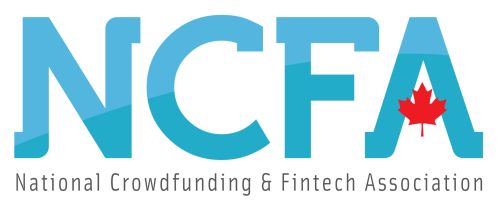ScienceSoft | Stacy Dubovik, Financial Technology and Blockchain Researcher| May 31, 2023

Modern online payments go back to the 90s, when banks began introducing online banking services for the first time. PayPal followed shortly after, in 1998, and the adoption of digital payments has only accelerated since then. The rise of smartphones has led to the development of convenient mobile payment platforms like Apple Pay and Google Wallet, further extending the capability to make digital payments anywhere at any time. Today, billions in online transactions are handled each year using online payment gateways.
Online payment gateways are now a requirement for any modern payment system because payment gateways offer secure, seamless, and efficient payment processing. Customers have come to expect a streamlined payment system.
Within this article, we’ll explore the process of creating a custom payment gateway. This includes the basic concepts of payment gateways, how to go about defining your gateway requirements, choosing a technology stack, and finally, launching your custom payment portal.
Overview of Payment Gateways
A payment gateway is an application that facilitates quick and frictionless online payments. Transaction data is transmitted between merchants and payment processors using secure methods like encryption of sensitive data. Payment gateways perform essential transaction functions, like verifying cardholder information and settling any paid funds.
Custom payment gateways offer several key advantages, including explicit control over the infrastructure of payment processing, increased security posture, improved customer experience, and potentially new streams of revenue. Your business can differentiate itself from competitors with a payment portal by offering unique payment features.
Understanding the Payment Gateway System
Let’s start by covering payment gateway architecture and then get familiar with the two main types of payment gateways before we cover how to integrate your custom gateway once it’s complete.
Payment Gateway Architecture
The architecture behind a payment gateway is generally composed of the following components:
- Merchant interface – with a merchant interface, your business can manage payments and handle transaction data.
- Payment processor interface – this interface is necessary to connect the payment gateway to card networks, banks, and other payment processors.
- Database – the database stores and manages all transaction data to ensure fidelity and security.
Types of Payment Gateway
Payment gateways can be separated into two main categories: hosted and integrated.
With hosted payment gateways, customers are redirected away from your business website to a separate payment page for payment processing. While integrated payment gateways keep the customer on the merchant’s website for a more seamless payment experience. When possible, an integrated payment gateway is the preferred choice.
Payment Gateway Integration Process
The work is not done when a payment gateway is built. The custom gateway needs to be integrated into existing systems. The merchant accounts and payment gateway will need to be configured. It’s critical that the gateway has been tested for seamless integration before launch, otherwise, there is a serious risk of unsecured or inaccurate transactions.
Features of a Payment Gateway
You can customize your new payment gateway to fit the needs of your business, but you’ll find that it’s a good idea to incorporate the following features in your own build:
- Fraud prevention – With advanced fraud detection tools, you can offer better protection against fraudulent transactions. These tools can include technologies like machine learning algorithms, device fingerprinting, and behavioral analysis.
- Chargeback management – Chargebacks occur when a customer disputes a transaction. The business must return the payment to the customer, thereby losing the revenue. Payment gateways can help manage chargebacks by providing dispute resolution mechanisms, chargeback notifications, and advanced fraud monitoring tools.
- Multi-currency support – To effectively manage international transactions, it’s important to accommodate various currencies in your payment processing system. Payment gateways can convert currencies and handle foreign exchange rates, helping your business expand into new geographic regions and even go global.
- Recurring billing – add recurring billing features to handle automated payments for subscription services or other recurring payments. Customers will appreciate the simplicity and ease of the payment process, while your business can benefit from reduced administrative tasks and increased efficiency.
Steps to Create Your Own Payment Gateway
With the basic introduction to payment gateway architecture, types, and key components out of the way, we can shift gears to discuss how to create your own payment gateway for 2023. This process involves several steps, including defining your payment gateway requirements, choosing a technology stack, developing your payment gateway, testing and debugging, and obtaining necessary certifications and compliance.
Let’s explore each of these steps a bit further:
1. Define Requirements
Your business may have unique requirements or expectations that you’d like your custom payment portal to meet. Ask yourself what your business hopes to accomplish with this project. Use your answer to that question as a way to chart the types of payments you want to support and the relative payment volume you expect to handle. Consider what security features are a must-have and what features you’d like to offer customers and merchants.
2. Choose a Technology Stack
Before you can start building your custom portal, you need to decide on a technology stack that will be used to develop the payment software. A technology stack is a specific combination of development technologies, including programming languages and frameworks.
Carefully consider this choice because it will impact the scalability of the technology, security, development costs, and compatibility with other systems.
When making this decision, you should consider the following points:
- Consider which modern security measures you want to implement.
- Consider licensing fees, hardware costs, and miscellaneous development costs.
- Consider how the stack will integrate with existing systems, like accounting software, payment processing networks, and e-commerce platforms.
- Consider platform scalability and the ability to handle large transaction volumes.
3. Development
At this point, you’ve completed all the pre-work, and it is now time for developers to write the code for your payment gateway. You’ll want to design an easy-to-use interface, so users can navigate your portal with ease.
Developing a payment gateway requires a strategic approach that can balance functionality, security, scalability, and reliability. By creating a payment gateway tailored to your specific needs, you can open up new opportunities for revenue generation. For example, a custom payment gateway can enable you to offer unique payment options to customers, such as subscription-based billing or loyalty program rewards.
4. Testing and Debugging
The next step in the process is testing and debugging. A payment gateway that is not adequately tested can cause issues down the line, including security vulnerabilities, lost sales, and even damage to your brand reputation.
During testing, developers can simulate different payment scenarios and transaction volumes to identify any vulnerabilities or instabilities within the payment gateway. They should also test that the gateway can handle currencies, processing networks, and other requirements that you outlined in the first step.
5. Obtain Necessary Certifications and Compliance
The last step before you can launch your custom gateway is to obtain any necessary certifications for compliance with local regulations. Here are some of the certifications and regulations that you may need to adhere to:
Consider working with legal and regulatory experts to ensure there are no compliance irregularities. Make a plan to conduct frequent audits and assessments of your gateway. This helps provide assurance that your payment portal meets all necessary standards and regulations.
Get Started
Creating a payment gateway is a significant undertaking, but it’s an investment that can provide several advantages for your business and customs. A custom payment gateway can help your business stand out from competitors and provide a unique selling point for customers. It can also increase security and protect against fraudulent transactions.
See: BoE Speech: 4 Areas at the Intersection of Payment Innovation, Tokenization, and Money
By leveraging the steps outlined in this article, your organization can start creating a payment gateway that aligns with your business needs while offering a superior user experience and competitive advantage. Consider collaborating with a reputable payment gateway provider that has experience in building tailored solutions.
 The National Crowdfunding & Fintech Association (NCFA Canada) is a financial innovation ecosystem that provides education, market intelligence, industry stewardship, networking and funding opportunities and services to thousands of community members and works closely with industry, government, partners and affiliates to create a vibrant and innovative fintech and funding industry in Canada. Decentralized and distributed, NCFA is engaged with global stakeholders and helps incubate projects and investment in fintech, alternative finance, crowdfunding, peer-to-peer finance, payments, digital assets and tokens, blockchain, cryptocurrency, regtech, and insurtech sectors. Join Canada’s Fintech & Funding Community today FREE! Or become a contributing member and get perks. For more information, please visit: www.ncfacanada.org
The National Crowdfunding & Fintech Association (NCFA Canada) is a financial innovation ecosystem that provides education, market intelligence, industry stewardship, networking and funding opportunities and services to thousands of community members and works closely with industry, government, partners and affiliates to create a vibrant and innovative fintech and funding industry in Canada. Decentralized and distributed, NCFA is engaged with global stakeholders and helps incubate projects and investment in fintech, alternative finance, crowdfunding, peer-to-peer finance, payments, digital assets and tokens, blockchain, cryptocurrency, regtech, and insurtech sectors. Join Canada’s Fintech & Funding Community today FREE! Or become a contributing member and get perks. For more information, please visit: www.ncfacanada.org
Related Posts
- SEO Powered Content & PR Distribution. Get Amplified Today.
- PlatoAiStream. Web3 Data Intelligence. Knowledge Amplified. Access Here.
- Minting the Future w Adryenn Ashley. Access Here.
- Buy and Sell Shares in PRE-IPO Companies with PREIPO®. Access Here.
- Source: https://ncfacanada.org/how-to-create-your-own-payment-gateway-in-2023/



